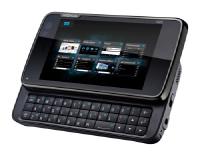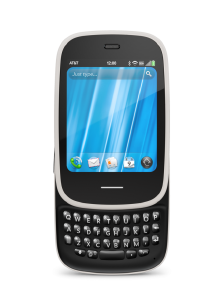The phone is dead, long live the phone

The phone is dead
I bought my first smartphone, a Nokia N900, just before Christmas, 2009. Chosen because its OS was the closest thing to a stock Linux distro I could find, the N900 has stood me in good stead for the last almost two years. I’ve used it to ssh into servers and restart failed services, stream video from a LEGO robot to my laptop, and Skype my family in the States while I was in Lebanon (if I remember correctly, it was the first smartphone to include Skype, though I may be wrong).
So fast-forward to a few weeks ago, with me sitting at my home in southwest Washington, enjoying my sabbatical. I glanced down at my phone and noticed something strange: The phone signal bar was gone, and in its place was a funky symbol that I finally realized was a SIM card with a red line through it. Restarting the phone fixed the problem. But over the next few days, the red SIM of death (RSOD) appeared more and more often and I finally reached the end of my rope.
Some research on the web, and a dmesg or two later revealed that the phone’s modem was constantly resetting, and, given the reset rate, was probably going bad. As I bought the phone in the US, it only had a one year warranty… and I was screwed. Bummer. Less than two years after buying it, my $550 phone had become an expensive unimpressive tablet. Thanks, Nokia. And now I had to replace it.

Long live the phone
During the HP Touchpad firesale, I managed to get ahold of one, and was really impressed by its ease of use, especially when it comes to multitasking. So I went to see what kind of WebOS phone I could get for cheap, and came up with the HP Veer. I managed to get it and a touchstone for just over $100, including shipping.
So far, I’ve been fairly impressed with it. Like Android, WebOS uses the Linux kernel, but not much of the higher stack. It doesn’t use X or any of the other standard applications that make up a normal Linux distro. Having said that, WebOS has strengths of its own. The N900 was great at multitasking, but the Veer takes it to a new level. WebOS’s card interface is not only easy to use, but also quite fun. There’s community-created software available from preware.org, and I’ve managed to overclock both the Touchpad and the Veer.
My main annoyance with the Veer is that it can sometimes be a bit unresponsive; I’ll tap the hang up button and it will flash, I’ll tap it again and it will flash again, but it won’t hang up until the third or fourth tap. I can understand that it may be thinking, but I find it a bit annoying to have the phone act like it received the event and then ignore it.
The most common complaint you’ll hear about the Veer is that it’s too small. And it is small, very small. But I’ve got small hands, so I don’t find the keyboard hard to use, and they do make good use of the space they’ve got on the display. And, after carrying around the brick that is the N900, it’s nice to have something so light that I can barely feel it in my pocket.
All in all, I find the Veer to be more fun and more intuitive than my wife’s new Android phone (which she is rapidly falling in love with).
Conclusion
So now I get to work out whether to try to get a few bucks by putting my N900 on ebay (but who would buy what’s essentially a two-year-old 5 inch tablet when there’s far better available), or keep it as a remote control for my media center in Lebanon.
And I get to see whether I can do the same kind of cool things with the Veer that I could do with the N900. Unfortunately the Veer doesn’t seem to come with gstreamer, so the LEGO robot idea might be out. But, I have hopes that the Veer will be at least somewhat as hackable as the N900 was.
Offtopic
For those who have been following along, Naomi (my wife) and I are currently on sabbatical in the States, following a month in Ireland. I was hoping for more time to work on Fedora stuff, but the last couple of months have been a bit crazy and I can’t realisticly expect the next few to be much different. I should be able to continue fixing the bugs that have popped up in yum-presto, but not much more than that.
I would love to meet any Fedora people in the area (I’m about an hour north of Portland on I-5), but haven’t had the time to track down if anyone’s actually in the area. I’d also love to do a conference, but, again, don’t know what’s in the area.
For those in Lebanon, we will be back at the end of this year, and I’m already looking forward to seeing you again.

Comments
foo
Saturday, Sep 17, 2011
Jonathan Dieter
Sunday, Sep 18, 2011
Um, do you have a particular person in mind? If giving someone the N900 meant that Fedora would get onto smartphones sooner, I’d send it to them in a heartbeat, but I suspect most developers prefer reasonably new hardware that’s fully working.
Again, if you can connect me to a developer that would actually use a partially-broken N900, I’ll happily send it to them.